Everybody needs a "day off" and the day in Davenport, IA, was mine. The only excursion that I made was the the Quad Cities Botanical Center on Rock Island.
This area was occupied by the Sauk and Fox tribes prior to the Black Hawk War of 1832. One of Jason's lectures dealt with this conflict, its predecessors, and its aftermath. It is complicated. The Wikipedia article at the link appears to be a good summary, although I don't pretend to understand all the ramifications. Bottom line: it was one of the justifications to force Native Americans to the west of the Mississippi.

The Quad Cities comprises Davenport & Bettendorf, IA, and Rock Island, Moline & East Moline, IL. We didn't know it at the time, but Bettendorf was the original home of our boat, American Duchess. She started life as a casino ship owned by the now defunct Isle of Capri casinos. There was one of them in my home town of Vicksburg, MS. Good riddance!
The area developed in the early 19th century around the confluence of the Rock and Mississippi Rivers as a supply area for boats traveling past the treacherous Rock Island Rapids, now under a dam-created lake. (The map at the link was produced under the command of future general Robert E. Lee in 1837. He was dispatched to see how to improve navigation in the area.)
By WWI, the cities of Davenport, Rock Island, and Moline began styling themselves the Tri-Cities. When fast-growing East Moline was added to the mix, the sobriquet "Quad Cities" came into use. Bettendorf became the fifth city after WWII , but by then the "Quad" name was in such common use that it stuck.
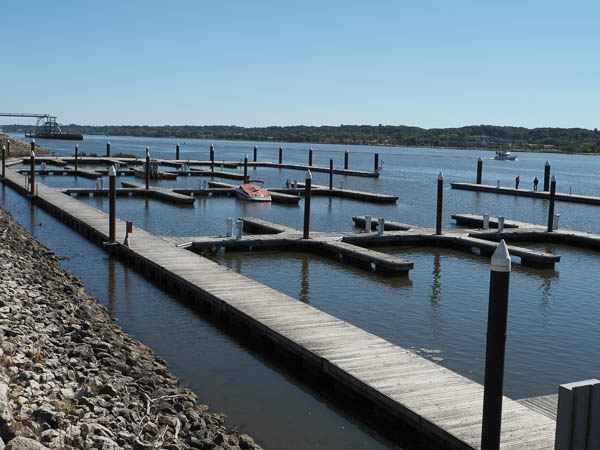
Our boat docked next to this marina with a prominent advertisement containing the understatement: "slips available." Take your pick!
Prior to the trip I had read a book Life On the Mississippi: An Epic American Adventure. One of its laments was the demise of marinas along the river. Many people call a boat "a hole in the water into which you throw money." The crash of 2008 took its toll on recreational income and the boating segment has never recovered.
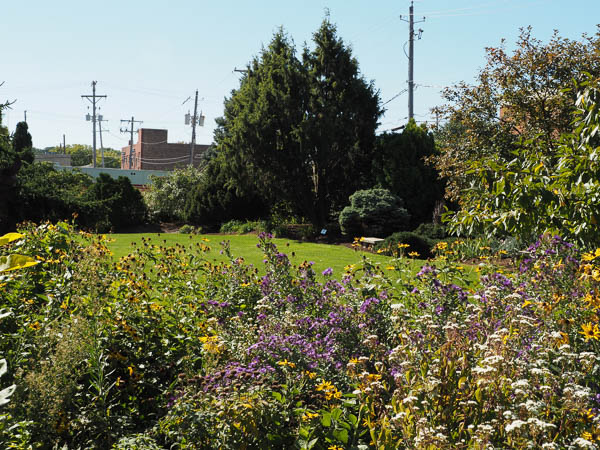
The Quad Cities Botanical Center is located on Rock Island. It showcases native plants and has an extensive collection of conifers.
Another section of the facility is a greenhouse with exotic tropical plants.
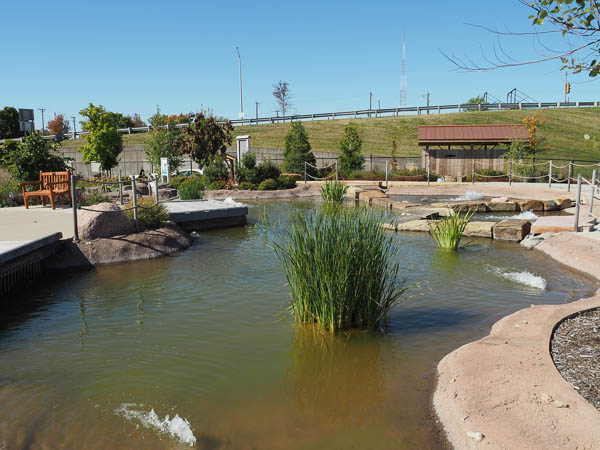
My favorite exhibit was a not-to-scale Mississippi River model basin that was part of a children's area. It started with this representation of Lake Itasca.
Summer camps held here introduce youngsters to the culture of the river.
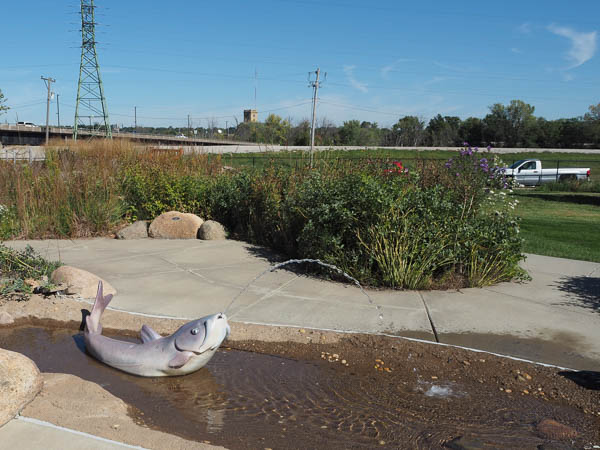
Farther down the model, this catfish fountain provided wading and splashing opportunities. There are at least three species of catfish found in the Mississippi: the channel catfish, the blue catfish, and the flathead catfish. The latter two can reach over 100 pounds.
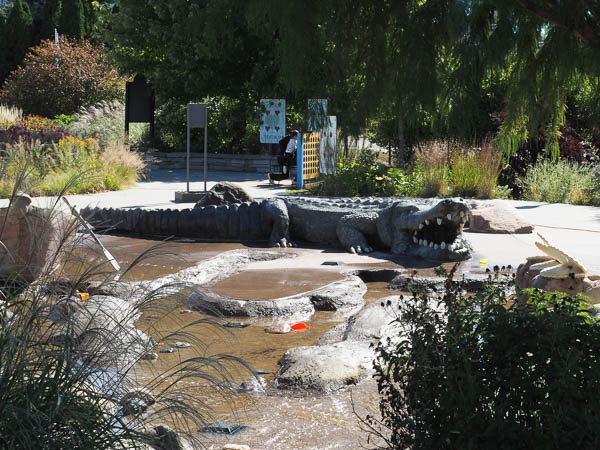
A fearsome alligator inhabits the delta portion of the model.
There were only a few children present at the time of my visit, but one of the gardeners said it could get quite lively at times.
The fountains in this area were being worked on, and random gushes were to be expected.
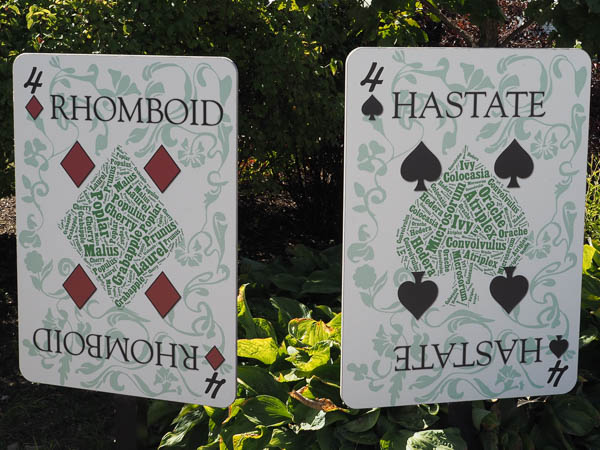
Playing cards and their suits introduced common leaf shapes. Selected plants featuring the various shapes are listed.
"Hastate" (triangular or shaped like an arrow, with two spreading lobes at the base) was a new term to me.
"Chordate" (hearts) and "trifoliate" (clubs) were also included.

Coming from Mississippi, which has a total of three (3) bridges over the Mississippi River in the entire state, it was a marvel to see a multiplicity of bridges on the Upper Mississippi. The Quad Cities have seven (7) bridges across the river.
As we returned to the dock in Davenport, we passed these I-74 bridges. The first of the pair of bridges on the right was built in 1935 with the additional span added in 1965. They were superseded by the new bridge in 2021. The older bridges are scheduled to be torn down but will need to be dismantled piece by piece to prevent river blockages by debris. That will take time and planning.
Click your "back" button to return to the previous page or click for our picture album.